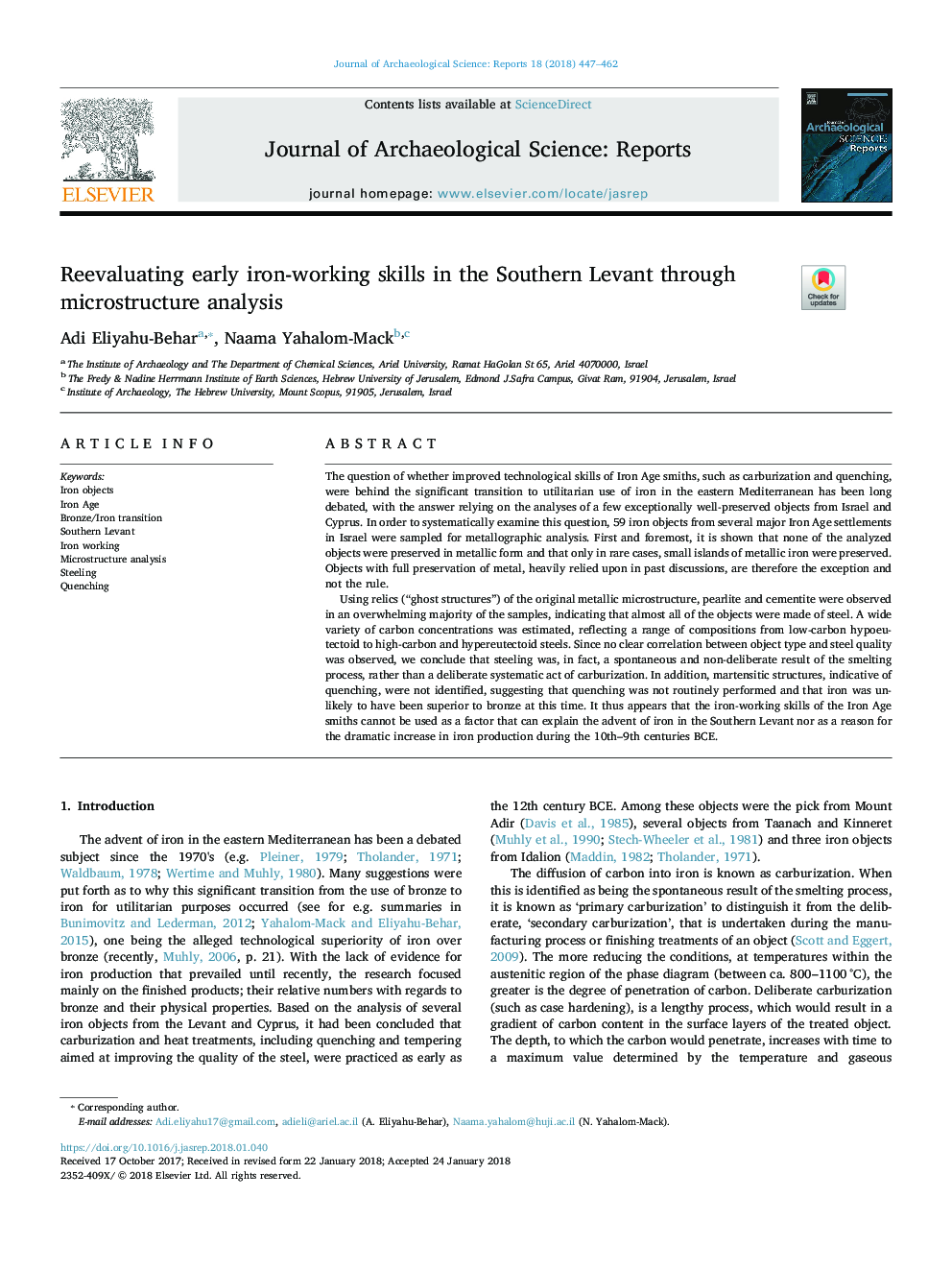| Article ID | Journal | Published Year | Pages | File Type |
|---|---|---|---|---|
| 7445025 | Journal of Archaeological Science: Reports | 2018 | 16 Pages |
Abstract
Using relics (“ghost structures”) of the original metallic microstructure, pearlite and cementite were observed in an overwhelming majority of the samples, indicating that almost all of the objects were made of steel. A wide variety of carbon concentrations was estimated, reflecting a range of compositions from low-carbon hypoeutectoid to high-carbon and hypereutectoid steels. Since no clear correlation between object type and steel quality was observed, we conclude that steeling was, in fact, a spontaneous and non-deliberate result of the smelting process, rather than a deliberate systematic act of carburization. In addition, martensitic structures, indicative of quenching, were not identified, suggesting that quenching was not routinely performed and that iron was unlikely to have been superior to bronze at this time. It thus appears that the iron-working skills of the Iron Age smiths cannot be used as a factor that can explain the advent of iron in the Southern Levant nor as a reason for the dramatic increase in iron production during the 10th-9th centuries BCE.
Related Topics
Social Sciences and Humanities
Arts and Humanities
History
Authors
Adi Eliyahu-Behar, Naama Yahalom-Mack,
